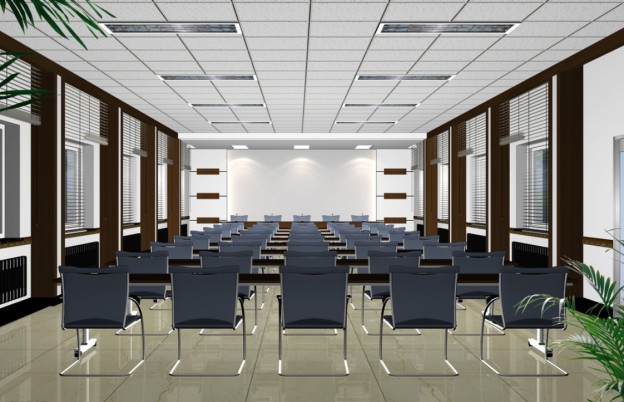How to get the best performance from this workspace? Are all the meeting rooms the same? Does the configuration of the room influence the objectives we intend to achieve in that meeting?
In our article today we give you the keys to design a meeting room that perfectly suits your space and productive needs and, also, to help you achieve the objectives you are looking for when convening a meeting.
The key is the configuration.
The key to design a comfortable, stylish and really functional meeting room is in its configuration, that is, how to place the tables and chairs depending on the people who will attend the meeting , as well as the purpose or purpose of the meeting. Will have the meeting itself.
The configuration is also fundamental to mark the tone of a meeting as it draws invisible lines of hierarchy, submission, leadership, etc. That is to say: break barriers or create them based on what we intend to achieve in that meeting.
From this point of view, three of the most common configurations of the current meeting rooms would be:
- Classical
- In blocks or groups.
- Hollow Square.
Classic configuration.
We all know the so-called classic configuration of a Board Room to use: a rectangular table with chairs on the sides and relevant posts in its head.
Main uses of this configuration: facilitates conversations led by a principal moderator, direct conversations between two groups of people and the exchange of written documentation.
Main advantages:
- This provision allows an important capacity of attendees to a meeting and, if we wish, establishes two confronting zones.
- It transmits a classic and serious image of the company or the convenor of the meeting.
- It is a comfortable space to hold extended meetings, delicate negotiations, confidential exchange of information, etc.
Configuration in blocks or groups.
A comfortable setting for training sessions or meetings, “brainstorming ” is to distribute different rectangular tables for blocks or groups where attendees are distributed well on one side of the table (facing a moderator) or on both sides of the table for collaborative work.
Main uses of this configuration: facilitates collaborative work meetings and punctual meetings between groups of departments. Many companies use this configuration to create an ideal workspace to do coworking activities and to organize continuous training sessions.
Main advantages:
- Facilitate communication in the group.
- Allows comfortable viewing of multimedia projections, videos, videoconferences, etc.
- Create a relaxed space where participants feel more comfortable to interact and contribute their ideas to the moderator of the session.
Configuration in Hollow Square.
A variation of the previous configuration consists of arranging the rectangular tables forming a square that leaves the interior space empty.
Main uses of this configuration: like the previous one, it facilitates the collaborative work meetings and the punctual meetings that seek a high participation of all the group of attendees to the meeting. It is also very used to do group dynamics, brainstorming sessions, collaborative work sessions, continuous training sessions, etc.
Main advantages:
- The configuration allows that all the assistants to the meeting can maintain a direct visual communication with the rest of companions.
- It diffuses the feeling of leadership or submission to the ideas and points of view of the most influential members or the moderator of the meeting.
- Create a relaxed, comfortable space that invites the rapid exchange of ideas and different points of view.
